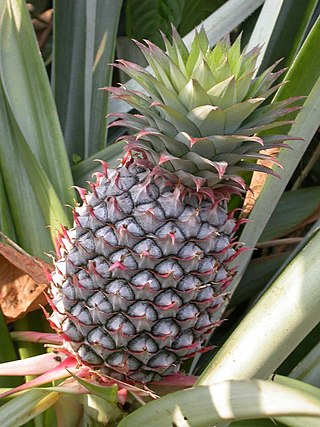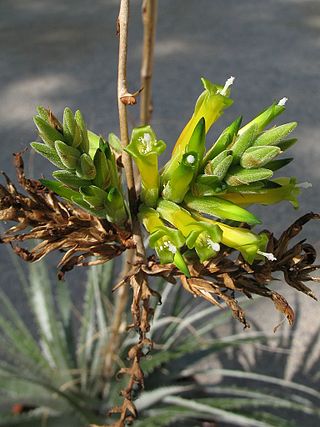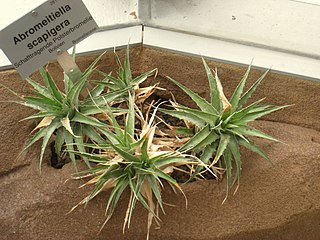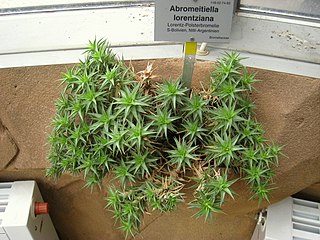
The Bromeliaceae are a family of monocot flowering plants of about 80 genera and 3700 known species, native mainly to the tropical Americas, with several species found in the American subtropics and one in tropical west Africa, Pitcairnia feliciana.

Deuterocohnia is a genus of plants in the family Bromeliaceae, subfamily Pitcairnioideae, endemic to South America. The genus is named for Ferdinand Julius Cohn, Jewish botanist and bacteriologist.
Deuterocohnia bracteosa is a plant species in the genus Deuterocohnia. This species is endemic to Bolivia.

Deuterocohnia brevispicata is a plant species in the genus Deuterocohnia. This species is endemic to Bolivia.

Deuterocohnia glandulosa is a plant species in the genus Deuterocohnia. This species is endemic to Bolivia.

Deuterocohnia scapigera is a plant species in the genus Deuterocohnia. This species is endemic to Bolivia.

Deuterocohnia lotteae is a plant species in the genus Deuterocohnia. This species is endemic to Bolivia at altitudes of 2500–3000 meters.

Deuterocohnia chrysantha is a plant species in the genus Deuterocohnia. This species is endemic to Chile.

Deuterocohnia longipetala is a species of flowering plant in the Bromeliaceae family. It is native to Bolivia.

Deuterocohnia lorentziana is a plant species in the genus Deuterocohnia. This species is native to Bolivia.

Deuterocohnia meziana is a plant species in the genus Deuterocohnia. This species is native to Bolivia.
Deuterocohnia strobilifera is a plant species in the genus Deuterocohnia. This species is native to Bolivia.
D. digitata may refer to:

The Argentine Monte (NT0802), or Low Monte, is an ecoregion of dry thorn scrub and grasslands in Argentina. It is one of the driest regions in the country. Human settlements are mainly near water supplies such as rivers or oases. Deforestation and over-grazing around these settlements have caused desertification.











